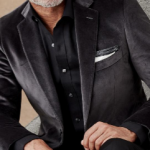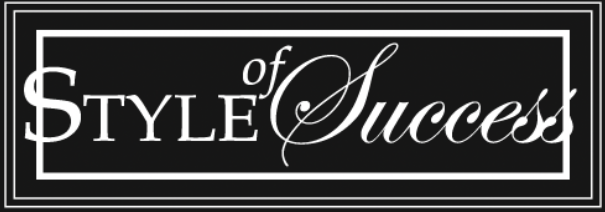If you would like to see the video version of this post click here.
It’s a world of free spirit and individuality… But fashion “rules” serve an important purpose. They assure that you always feel appropriate, and you can enter into any situation with confidence. Dressing well can be frustrating when it feels like there is some undefined land between boring and forgettable and looking like a dandy trying too hard. I created Matching Rules for Men because my clients tell me they wish there were more rules – they don’t appreciate ambiguity at 6 am when headed out for work, or a 6pm on a Saturday night before a big event. Let me shed some light on this for you. In business, “low risk” fabrics can be characterized as flat, matt, traditional and similar.
- Flat fabrics don’t have a significant “nap” (like velvet, corduroy or fuzzy sweaters do)
- Matt fabrics are natural fabrics like wool and cotton that minimally reflect light
- Traditional fabrics are “expected” such as fine gauge wool for a suit, pinpoint cotton for a shirt, a silk tie, a linen pocket square
- Similar fabrics are pairings of like fabric families. For example a wool tie with a tweed jacket. A silk pocket square, with a polished cotton shirt, and a smooth higher luster suiting fabric.
So you have this baseline of lower risk business appropriate fabrics, but following these 4 rules is not always optimal. In many industries you want to add in different fabrics and textures to support an image or perception of your energy, creativity, confidence and desire to collaborate with others. So what can you do to begin to add some textural fabric interest to your look? Lets go back to the original low risk “rules” but this time, modify them. Add some subtle texture to “flat” fabrics; summer fabrics could include seersucker, linen with its characteristic nubby quality, winter fabrics can include cashmere, narrow whale corduroy, tweeds and fine gauge knits. Unless your workplace requires more formal attire, let’s add some unexpected fabrics – mixing in an open weave hopsack fabric makes a traditionally styled sport coat more casual, and pairs so well with denim and looser weave oxford shirts. Or a fine gauge sweater and dress shirt that you added a knit tie can be a little sartorial surprise. I want to leave you with an overall matching rule of “modified similar” This the idea of harmonizing similar but not exact textures and fabric qualities to create a highly sophisticated look.  The weave of the winter sport coat is subtle, it has some texture. The weave of the knit shirt has more texture than a similarly colored dark dress shirt, and the pocket square is a soft woven cotton/wool, not silk.
The weave of the winter sport coat is subtle, it has some texture. The weave of the knit shirt has more texture than a similarly colored dark dress shirt, and the pocket square is a soft woven cotton/wool, not silk.  These three fabrics in this more formal look work because they all have some level of luster. The dark dress shirt, the velvet jacket and the silk pocket square all share attributes of light reflectivity. Possible mistakes? Use higher risk fabrics carefully, and likely more for social use than business. These include leather (not accessories, but apparel), highly reflective fabrics like shiny satin, high “pile” (raised fabrics) like faux/fur, terrycloth, fleece and any fabrics that you could multi-task by going to the gym in.
These three fabrics in this more formal look work because they all have some level of luster. The dark dress shirt, the velvet jacket and the silk pocket square all share attributes of light reflectivity. Possible mistakes? Use higher risk fabrics carefully, and likely more for social use than business. These include leather (not accessories, but apparel), highly reflective fabrics like shiny satin, high “pile” (raised fabrics) like faux/fur, terrycloth, fleece and any fabrics that you could multi-task by going to the gym in.
I am a Personal Image Consultant and a J Hilburn Stylist, Trainer and Recruiter
I bring confidence, organization, efficiency to your life.
